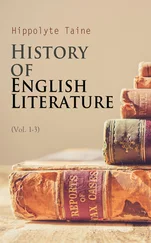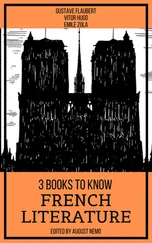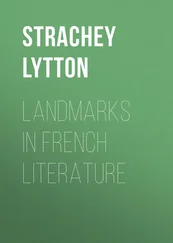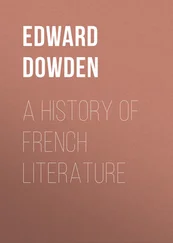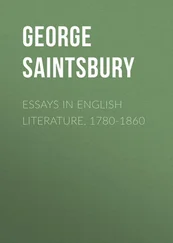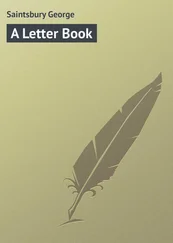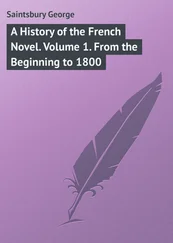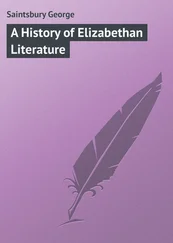George Saintsbury - A Short History of French Literature
Здесь есть возможность читать онлайн «George Saintsbury - A Short History of French Literature» — ознакомительный отрывок электронной книги совершенно бесплатно, а после прочтения отрывка купить полную версию. В некоторых случаях можно слушать аудио, скачать через торрент в формате fb2 и присутствует краткое содержание. ISBN: , Жанр: foreign_prose, на английском языке. Описание произведения, (предисловие) а так же отзывы посетителей доступны на портале библиотеки ЛибКат.
- Название:A Short History of French Literature
- Автор:
- Жанр:
- Год:неизвестен
- ISBN:http://www.gutenberg.org/ebooks/33062
- Рейтинг книги:3 / 5. Голосов: 1
-
Избранное:Добавить в избранное
- Отзывы:
-
Ваша оценка:
- 60
- 1
- 2
- 3
- 4
- 5
A Short History of French Literature: краткое содержание, описание и аннотация
Предлагаем к чтению аннотацию, описание, краткое содержание или предисловие (зависит от того, что написал сам автор книги «A Short History of French Literature»). Если вы не нашли необходимую информацию о книге — напишите в комментариях, мы постараемся отыскать её.
A Short History of French Literature — читать онлайн ознакомительный отрывок
Ниже представлен текст книги, разбитый по страницам. Система сохранения места последней прочитанной страницы, позволяет с удобством читать онлайн бесплатно книгу «A Short History of French Literature», без необходимости каждый раз заново искать на чём Вы остановились. Поставьте закладку, и сможете в любой момент перейти на страницу, на которой закончили чтение.
Интервал:
Закладка:
Amis et Amiles.
As Roland is by far the most interesting of those Chansons which describe the wars with the Saracens, so Amis et Amiles 21 21 Amis et Amiles , ed. Hoffmann. Erlangen, 1852.
may be taken as representing those where the interest is mainly domestic. Amis et Amiles is the earliest vernacular form of a story which attained extraordinary popularity in the middle ages, being found in every language and in most literary forms, prose and verse, narrative and dramatic. This popularity may partly be assigned to the religious and marvellous elements which it contains, but is due also to the intrinsic merits of the story. The Chanson contains 3500 lines, dates probably from the twelfth century, and is written, like Roland , in decasyllabic verse, but, unlike Roland , has a shorter line of six syllables and not assonanced at the end of each stanza. Its story is as follows: —
Amis and Amiles were two noble knights, born and baptized on the same day, who had the Pope for sponsor, and whose comradeship was specially sanctioned by a divine message, and by the miraculous likeness which existed between them. They were however brought up, the one in Berri, the other in Auvergne, and did not meet till both had received knighthood. As soon as they had joined company, they resolved to offer their services to Charles, and did him great service against rebels. Here the action proper begins. The friends arouse the jealousy of Hardré, a felon knight, of Ganelon's lineage and likeness. Hardré engages Gombaud of Lorraine, an enemy of the Emperor, to attack the two friends; but the treason does not succeed, and the traitor, to escape unpleasant enquiries, recommends Charles to bestow his own niece Lubias on Amiles. The latter declares that Amis deserves her better, and to Amis she is married, bearing however no good-will to Amiles for his resignation of her and for his firm hold on her husband's affection. Meanwhile, the daughter of Charles, Bellicent, conceives a violent passion for Amiles, and the traitor Hardré unfortunately becomes aware of the matter. He at once accuses Amiles of treason, and the knight is too conscious of the dubiousness of his cause to be very willing to accept the wager of battle. From this difficulty he is saved by Amis, who comes to Paris from his distant seignory of Blaivies (Blaye), and fights the battle in the name and armour of his friend, while the latter goes to Blaye and plays the part of his preserver. Both ventures are made easier by the extraordinary resemblance of the pair. Amis is successful; he slays Hardré, and then has no little difficulty in saving himself from a forced marriage with Bellicent. This embroglio is smoothed out, and Amiles and Bellicent are happily united. The generous Amis however has not been able to avoid forswearing himself while playing the part of Amiles; and this sin is punished, according to a divine warning, by an attack of leprosy. His wife Lubias seizes the opportunity, procures a separation from him, and almost starves him, or would do so but for two faithful servants and his little son. At last a means of cure is revealed to him. If Amiles and Bellicent will allow their two sons to be slain the blood will recover Amis of his leprosy. The stricken knight journeys painfully to his friend and tells him the hard condition. Amiles does not hesitate, and the following passage tells his deed: —
Li cuens Amiles un petit s'atarja,
vers les anfans pas por pas en ala,
dormans les treuve, moult par les resgarda,
s'espee lieve, ocirre les voldra;
mais de ferir un petit se tarja.
li ainznés freres de l'effroi s'esveilla
que li cuens mainne qui en la chambre entra,
l'anfes se torne, son pere ravisa,
s'espee voit, moult grant paor en a,
son pere apelle, si l'en arraisonna:
'biax sire peres, por deu qui tout forma,
que volez faire? nel me celez vos ja.
ainz mais nus peres tel chose ne pensa.'
'biaux sire fiuls, ocirre vos voil ja
et le tien frere qui delez toi esta;
car mes compains Amis qui moult m'ama,
dou sanc de vos li siens cors garistra,
que gietez est dou siecle.'
'Biax tres douz peres,' dist l'anfes erramment,
'quant vos compains avra garissement,
se de nos sans a sor soi lavement,
nos sommes vostre de vostre engenrement,
faire en poëz del tout a vo talent.
or nos copez les chiés isnellement;
car dex de glorie nos avra en present,
en paradis en irommes chantant
et proierommes Jhesu cui tout apent
que dou pechié vos face tensement,
vos et Ami, vostre compaingnon gent;
mais nostre mere, la bele Belissant,
nos saluëz por deu omnipotent.'
li cuens l'oït, moult grans pitiés l'en prent
que touz pasmez a la terre s'estent.
quant se redresce, si reprinst hardement.
or orroiz ja merveilles, bonne gent,
que tex n'oïstes en tout vostre vivant.
li cuens Amiles vint vers le lit esrant,
hauce l'espee, li fiuls le col estent.
or est merveilles se li cuers ne li ment.
la teste cope li peres son anfant,
le sanc reciut et cler bacin d'argent:
a poi ne chiet a terre.
No sooner has the blood touched Amis than he is cured, and the knights solemnly visit the church where Bellicent and the people are assembled. The story is told and the mother, in despair, rushes to the chamber where her dead children are lying. But she finds them living and in full health, for a miracle has been wrought to reward the faithfulness of the friends now that suffering has purged them of their sin.
This story, touching in itself, is most touchingly told in the Chanson. No poem of the kind is more vivid in description, or fuller of details of the manners of the time, than Amis et Amiles . Bellicent and Lubias, the former passionate and impulsive but loving and faithful, the latter treacherous, revengeful, and cold-hearted, give perhaps the earliest finished portraits of feminine character to be found in French literature. Amis and Amiles themselves are presented to us under so many more aspects than Roland and Oliver that they dwell better in the memory. The undercurrent of savagery which distinguished mediæval times, and the rapid changes of fortune which were possible therein, are also well brought out. Not even the immolation of Ganelon's hostages is so striking as the calm ferocity with which Charlemagne dooms his wife and son as well as his daughter to pay with their lives the penalty of Bellicent's fault; while the sudden lapse of Amis from his position of feudal lordship at Blaye to that of a miserable outcast, smitten and marked out for public scorn and ill-treatment by the visitation of God, is unusually dramatic. Amis et Amiles bears to Roland something not at all unlike the relation of the Odyssey to the Iliad. Its continuation, Jourdains de Blaivies , adds the element of foreign travel and adventure; but that element is perhaps more characteristically represented, and the representation has certainly been more generally popular, in Huon de Bordeaux .
Other principal Chansons.
Of the remaining Chansons, the following are the most remarkable. Aliscans (twelfth century) deals with the contest between William of Orange, the great Christian hero of the south of France, and the Saracens. This poem forms, according to custom, the centre of a whole group of Chansons dealing with the earlier and later adventures of the hero, his ancestors, and descendants. Such are Le Couronnement Loys , La Prise d'Orange , Le Charroi de Nimes , Le Moniage Guillaume . The series formed by these and others 22 22 This series is given, sometimes in whole, sometimes in extracts, by Dr. Jonckbloet, Guillaume d'Orange . The Hague, 1854.
is among the most interesting of these groups. Le Chevalier au Cygne is a title applied directly to a somewhat late version of an old folk-tale, and more generally to a series of poems connected with the House of Bouillon and the Crusades. The members of this bear the separate headings Antioche 23 23 Ed. P. Paris. Paris, 1848.
, Les Chétifs , Les Enfances Godefroy , etc. Antioche , the first of these, which describes the exploits of the Christian host, first in attacking and then in defending that city, is one of the finest of the Chansons, and is probably in its original form not much later than the events it describes, being written by an eye-witness. The variety of its personages, the vivid picture of the alternations of fortune, the vigour of the verse, are all remarkable. This group is terminated by Baudouin de Sebourc 24 24 Ed. Boca. Valenciennes, 1841.
, a very late but very important Chanson, which falls in with the poetry of the fourteenth century, and the Bastart de Bouillon 25 25 Ed. Schéler. Brussels, 1877.
. La Chevalerie Ogier de Danemarche 26 26 Ed. Barrois. Paris, 1842.
is the oldest form in which the adventures of one of the most popular and romantic of Charlemagne's heroes are related. Fierabras had also a very wide popularity, and contains some of the liveliest pictures of manners to be found in these poems, in its description of the rough horse-play of the knights and the unfilial behaviour of the converted Saracen princess. This poem is also of much interest philologically 27 27 There exists a Provençal version of it, evidently translated from the French. The most convenient edition is that of Kroeber and Servois, Paris, 1860. There is an English fourteenth-century version published by Mr. Herrtage for the Early English Text Society, 1879.
. Garin le Loherain 28 28 Published partially by MM. P. Paris and E. du Méril and by Herr Stengel.
is the centre of a remarkable group dealing not directly with Charlemagne, but with the provincial disputes and feuds of the nobility of Lorraine. Raoul de Cambrai 29 29 Ed. Le Glay. Paris, 1840.
is another of the Chansons which deal with 'minor houses,' as they are called, in contradistinction to the main Carlovingian cycle. Gérard de Roussillon 30 30 Ed. Michel. Paris, 1856.
ranks as a poem with the best of all the Chansons. Hugues Capet 31 31 Ed. La Grange. Paris, 1864.
, though very late, is attractive by reason of the glimpses it gives us of a new spirit supplanting that of chivalry proper. In it the heroic distinctly gives place to the burlesque. Macaire 32 32 Ed. Guessard. Paris, 1866.
, besides being written in a singular dialect, in which French is mingled with Italian, supplies the original of the well-known dog of Montargis. Huon de Bordeaux 33 33 Ed. Guessard et Grandmaison. Paris, 1860.
, already mentioned, was not only more than usually popular at the time of its appearance, but has supplied Shakespeare with some of the dramatis personae of A Midsummer Night's Dream , and Wieland and Weber with the plot of a well-known poem and opera. Jourdains de Blaivies , the sequel to Amis et Amiles , contains, besides much other interesting matter, the incident which forms the centre of the plot of Pericles . Les Quatre Fils Aymon or Renaut de Montauban 34 34 Ed. Michelant. Stuttgart, 1862.
is the foundation of one of the most popular French chap-books. Les Saisnes 35 35 Ed. Michel. Paris, 1839.
deals with Charlemagne's wars with Witekind. Berte aus grans Piés 36 36 Ed. Schéler. Brussels, 1874.
is a very graceful story of womanly innocence. Doon de Mayence 37 37 Ed. Pey. Paris, 1859.
, though not early, includes a charming love-episode. Gérard de Viane 38 38 Ed. Tarbé. Rheims, 1850.
contains the famous battle of Roland and Oliver. The Voyage de Charlemagne à Constantinople 39 39 Ed. Michel. London, 1836.
is semi-burlesque in tone and one of the earliest in which that tone is perceptible.
Интервал:
Закладка:
Похожие книги на «A Short History of French Literature»
Представляем Вашему вниманию похожие книги на «A Short History of French Literature» списком для выбора. Мы отобрали схожую по названию и смыслу литературу в надежде предоставить читателям больше вариантов отыскать новые, интересные, ещё непрочитанные произведения.
Обсуждение, отзывы о книге «A Short History of French Literature» и просто собственные мнения читателей. Оставьте ваши комментарии, напишите, что Вы думаете о произведении, его смысле или главных героях. Укажите что конкретно понравилось, а что нет, и почему Вы так считаете.


